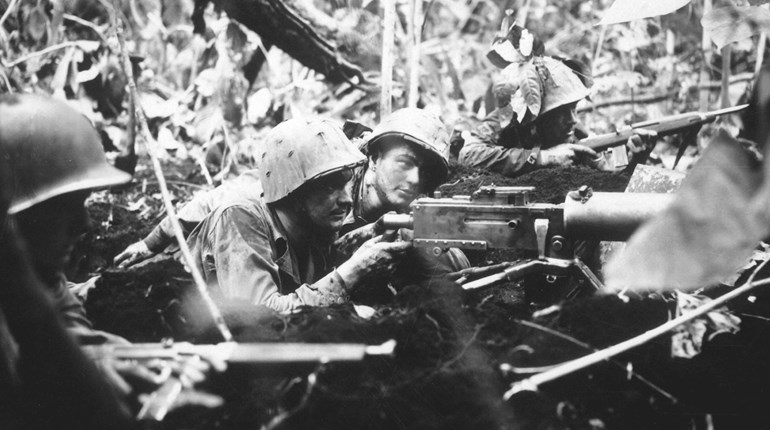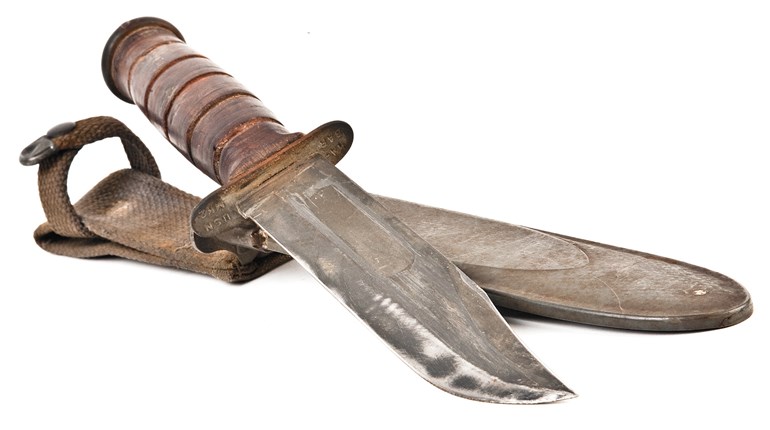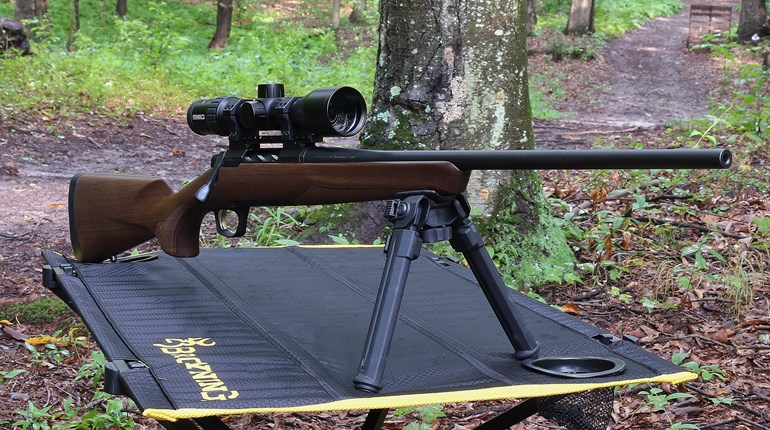
Many NRA American Warrior readers will note that this week marks the 70th anniversary of the end of World War II in Europe—or “VE” Day (May 8, 1945). Given that historical distance, there’s a thoroughly modern temptation to focus on mere “now,” which is as understandable as it is unwise.
The scale of the conflict was so huge that it is difficult to say with precision when it started. Engagements occurred for some combatants as early as 1935, and what was essentially a complete “practice war” raged from 1936 to 1939 in the guise of the Spanish Civil War. Eventually, 25 “Axis” powers, led by Germany, Italy and Japan, pitted themselves against 23 “Allied” powers, led by the United States, the British Empire, China and eventually the Soviet Union. More than 100 million soldiers on both sides donned their country’s uniforms. One major player (Josef Stalin’s then-Soviet Army) even changed sides, joining dictator Adolf Hitler’s assault on Poland in September of 1939, only to find itself under German guns by June of 1941.
Americans were deeply apprehensive about being drawn into another European war, though President Franklin Roosevelt supported distant Allies (his “Arsenal of Democracy” speech came in December of 1940) through the Lend-Lease Act of 1941. Any such hopes of avoiding the conflict were dashed when an aircraft carrier-launched attack by the Imperial Navy of Japan caught the U.S. Pacific Fleet napping in Pearl Harbor, Hawaii, on Dec. 7, 1941.
That “Arsenal” went on to manufacture 276,000 aircraft for all wartime needs of the U.S. alone—about 14 times the size of the world’s top 10 present-day Air Forces combined. The U.S. Navy commissioned about 60 aircraft carriers in 1943 alone (including escort carriers). By comparison, the U.S. Navy currently operates only 10.
Granted, the technologies and capabilities of those aircraft and ships were staggeringly different. Then again, so were the human resources: With only 42 percent of the present-day U.S. population, 16.1 million went into uniform, and the remainder turned out all the materiel that made VE Day possible.
But it was a different time in other senses, too: There was little confusion about “who was doing what, and to whom.” The 11-month lapse between Neville Chamberlain’s “I have returned from Germany with peace for our time,” and the Blitzkrieg into Poland were clear enough for most. If June’s loss of France and abandonment of the continent at Dunkirk left any doubts, they vanished with the fall of bombs on London in September of 1940. Indeed, Americans were already in the fight as members of the RAF’s “Eagle Squadrons” during the Battle of Britain.
In the next three-and-a-half years, roughly 1 million U.S. soldiers, sailors and airmen would see serious combat on four continents. Air power and aircraft carriers would emerge as the keys to victory (the former, especially in Europe, the latter in Pacific/Southeast Asia), though both would do so mainly to make way for the amphibious or parachute assaults by the Army and Marine Corps. Operations Torch, Husky, Avalanche and the D-Day invasion of Normandy would eventually free Europe, while Pacific island-hopping in unheard-of places like Guadalcanal, Tarawa, Saipan and Iwo Jima would produce some of the bloodiest fighting of the war.
Back home, almost everything would be rationed—not merely metals, rubber and gasoline. “Use it up, wear it out, make it do” became credo and practice for every strata of society. Millions who could not serve in the military rewired lives and careers in war efforts. The Manhattan Project was the most famous and consequential, but there were many, many others. Eight million American wives, mothers and sisters worked outside the home for the first time—as nurses and ferry pilots, many know, but also in physically demanding jobs as WOWs and, of course, the famous Rosie.
The D-Day landings, though costly, held. After many hard-fought successes, December of 1944 brought the advancing Allies to a desperate pass. In the heavily wooded Ardennes Forest of Belgium, France and Luxembourg, poor weather negated Allied air superiority, and over-stretched, under-provisioned lines gave the Wehrmacht a last throw. Two hundred thousand men were hurled into what became known as the Battle of the Bulge in hopes of dividing American and British Commonwealth forces. Hitler hoped a successful drive to Antwerp would allow for a negotiated peace with the Western Allies, and allow him to halt Russian advances in the east. An approximately 65-mile salient would have reached the port. Finally clearing weather, returning air support, and the 101st Airborne’s famously stubborn defense of Bastogne held them to only 30.
Though Hitler had only three months to live by the time the Allies regained their pre-Bulge positions in late January, 89,000 casualties (19,000 KIA) had been incurred—the costliest battle of World War II for the United States. April saw the Allies battling their way into the heart of Germany. While resistance steadily faltered and casualties and combat abated, a fresh horror awaited their advance. On April 4, 1945, Ohrdruf Camp (part of the larger Buchenwald network) became the first concentration/extermination camp liberated by U.S. troops.
Upon viewing the brutal carnage, Supreme Allied Commander Dwight Eisenhower immediately asked Washington for a selection of high-ranking officials and influential journalists to be brought to Germany so that the atrocities could never be questioned, and extensive photographic records made. Hard-bitten Gen. George Patton would write in his diary simply that it was “one of the most appalling sights that I have ever seen.”
Hitler committed suicide in his bunker on April 30, and Berlin surrendered to the Russians two days later. After the signing of an unconditional surrender document by Generaloberst Alfred Jodl at Reims, France, the first “Victory-Europe” Day dawned on May 8, 1945.
The Allied victory in World War II remains a captivating panorama 70 years hence: a brand in memory, and often unpleasant. Yet it is with a spark of hope that AW views the film industry’s renewed interest in World War II storytelling in recent years. Whatever the motives, the result can be cautiously lauded: Such a record, even stylized and second-hand, is in some small measure that vanishing memory preserved.
We who were lucky enough to be the sons and daughters of those bashful, everyday titans learned young that we were in the presence of something special. If that doesn’t include you, we’d still urge you to find a World War II vet of any sort, and thank him or her—perhaps for their last time—this VE Day.






































